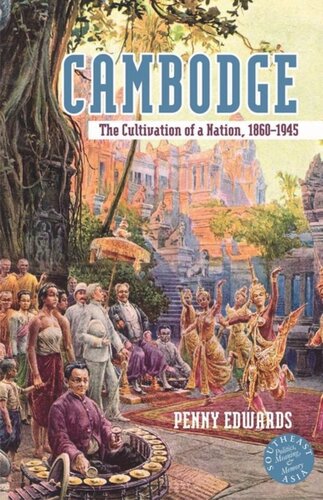

Most ebook files are in PDF format, so you can easily read them using various software such as Foxit Reader or directly on the Google Chrome browser.
Some ebook files are released by publishers in other formats such as .awz, .mobi, .epub, .fb2, etc. You may need to install specific software to read these formats on mobile/PC, such as Calibre.
Please read the tutorial at this link: https://ebookbell.com/faq
We offer FREE conversion to the popular formats you request; however, this may take some time. Therefore, right after payment, please email us, and we will try to provide the service as quickly as possible.
For some exceptional file formats or broken links (if any), please refrain from opening any disputes. Instead, email us first, and we will try to assist within a maximum of 6 hours.
EbookBell Team

4.3
28 reviewsThis strikingly original study of Cambodian nationalism brings to life eight turbulent decades of cultural change and sheds new light on the colonial ancestry of Pol Pot’s murderous dystopia. Penny Edwards recreates the intellectual milieux and cultural traffic linking Europe and empire, interweaving analysis of key movements and ideas in the French Protectorate of Cambodge with contemporary developments in the Métropole. From the naturalist Henri Mouhot’s expedition to Angkor in 1860 to the nationalist Son Ngoc Thanh’s short-lived premiership in 1945, this history of ideas tracks the talented Cambodian and French men and women who shaped the contours of the modern Khmer nation. Their visions and ambitions played out within a shifting landscape of Angkorean temples, Parisian museums, Khmer printing presses, world’s fairs, Buddhist monasteries, and Cambodian youth hostels. This is cross-cultural history at its best.
With its fresh take on the dynamics of colonialism and nationalism, Cambodge: The Cultivation of a Nation will become essential reading for scholars of history, politics, and society in Southeast Asia. Edwards’ nuanced analysis of Buddhism and her consideration of Angkor’s emergence as a national monument will be of particular interest to students of Asian and European religion, museology, heritage studies, and art history. As a highly readable guide to Cambodia’s recent past, it will also appeal to specialists in modern French history, cultural studies, and colonialism, as well as readers with a general interest in Cambodia.